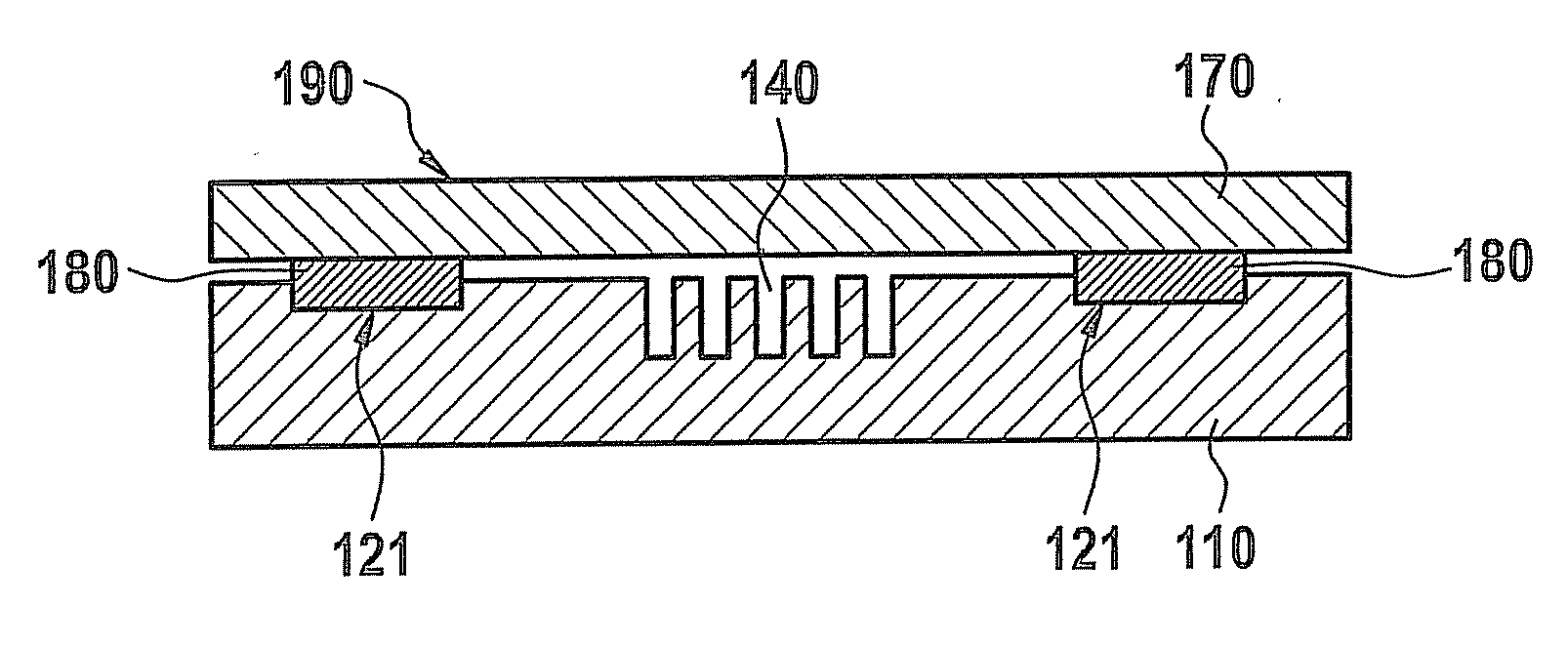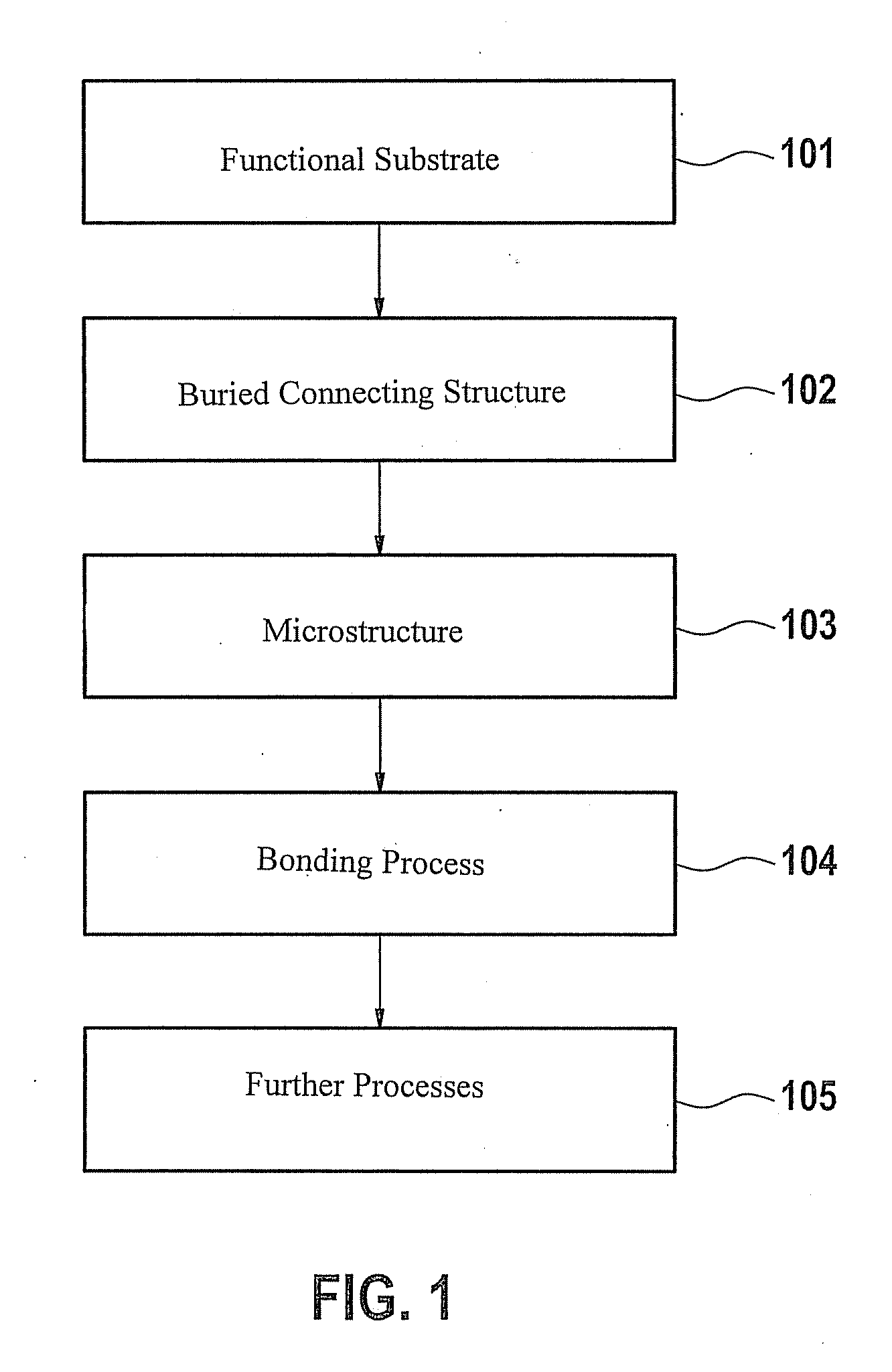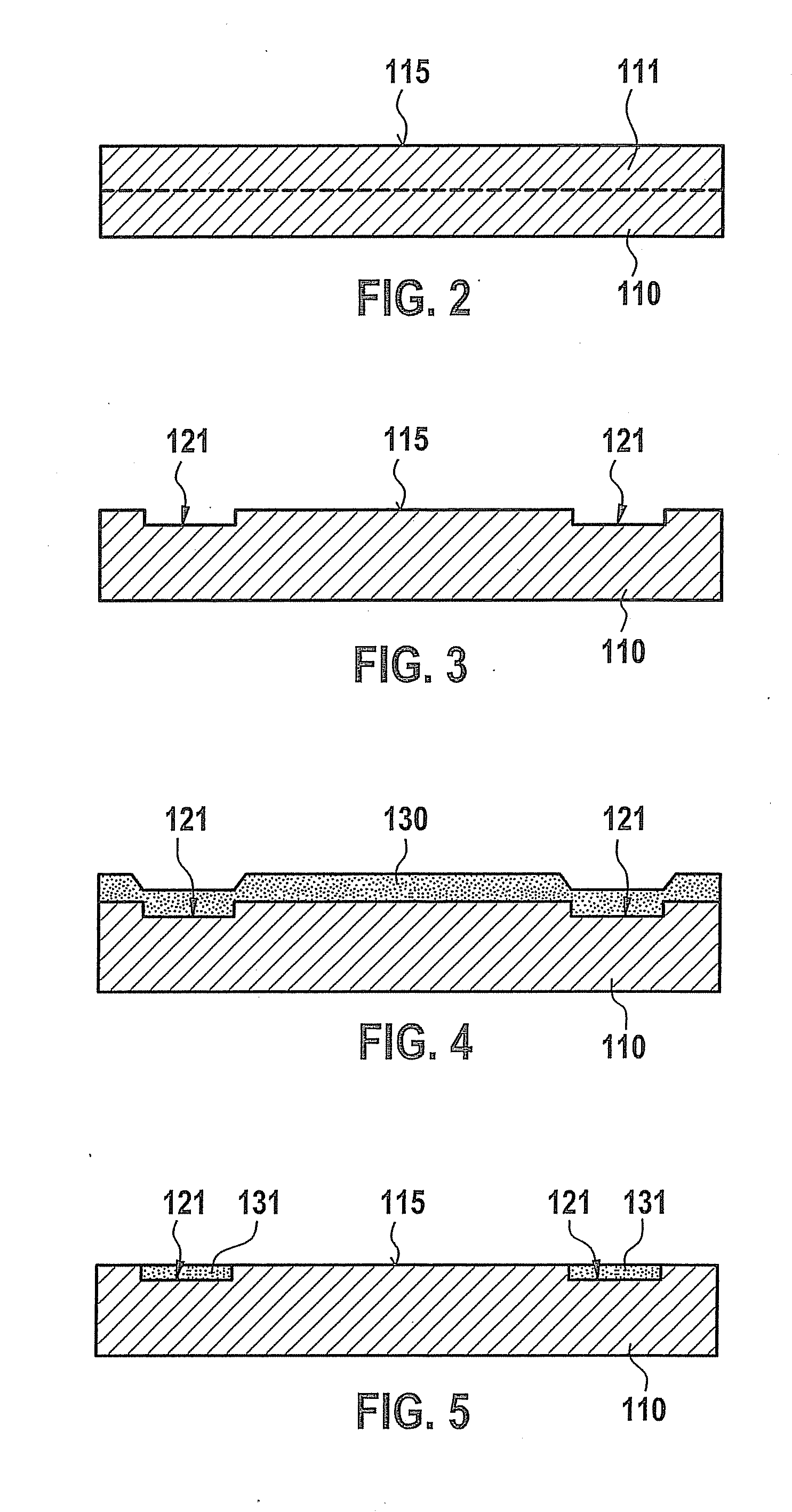Micromechanical Component
a micromechanical and component technology, applied in the direction of fixed microstructure devices, semiconductor/solid-state device details, semiconductor devices, etc., can solve the problems of microstructure production, thickness variation, wave or wave, etc., and achieve low cost, low degree of complexity, and reliable removal
- Summary
- Abstract
- Description
- Claims
- Application Information
AI Technical Summary
Benefits of technology
Problems solved by technology
Method used
Image
Examples
Embodiment Construction
[0036]With the aid of the following figures, methods for manufacturing a micromechanical component are described in which two substrates are joined to one another within the scope of a wafer bonding process. Processes and materials customary in semiconductor and microsystems technology may be used in the manufacturing methods, which means that these will only be discussed in part. Moreover, it is emphasized that further processes may be carried out in addition to the method steps shown and described.
[0037]FIG. 1 shows a flow chart of a method for manufacturing a micromechanical component, which may be, e.g., an inertial sensor. In the method, a first substrate, which has a functional layer on one side, and which is referred to hereinafter as a functional substrate, is prepared in a step 101. In a subsequent step 102, a buried, frame-shaped connecting structure, also referred to as a “bonding layer” or “bonding frame,” which extends to an upper surface of the substrate (or of the fun...
PUM
 Login to View More
Login to View More Abstract
Description
Claims
Application Information
 Login to View More
Login to View More - R&D
- Intellectual Property
- Life Sciences
- Materials
- Tech Scout
- Unparalleled Data Quality
- Higher Quality Content
- 60% Fewer Hallucinations
Browse by: Latest US Patents, China's latest patents, Technical Efficacy Thesaurus, Application Domain, Technology Topic, Popular Technical Reports.
© 2025 PatSnap. All rights reserved.Legal|Privacy policy|Modern Slavery Act Transparency Statement|Sitemap|About US| Contact US: help@patsnap.com



